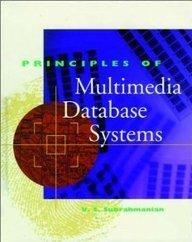Question
Suppose you buy 100 shares of a stock at $12 per share, then another 100 at $10 per share, then you sell 150 shares at
Suppose you buy 100 shares of a stock at $12 per share, then another 100 at $10 per share, then you sell 150 shares at $15. You have to pay taxes on the gain, but exactly what is the gain? In the United States, the FIFO rule holds: You first sell all shares of the first batch for a profit of $300, then 50 of the shares from the second batch, for a profit of $250, yielding a total profit of $550. Write a program that can make these calculations for arbitrary purchases and sales of shares in a portfolio. The user enters commands buy symbol quantity price, sell symbol quantity price (which causes the gain on that transaction to be displayed), and quit. Hint: Keep a Map
Additionally, add in two new choices to the menu, display which will show a list of all the stocks and how many of each are in the portfolio, and profit which would give the total of all the gains.
You do not need to add any additional methods other than what are included. There is a sample of an input script so you can see how I may test your program. This does not include the two new commands. Be sure to fully test the program before submitting it. I should not be able to crash it.
/** A quantity and price of a block of stocks. */ public class Block { private final int price; private int quantity;
/** Constructor. @param quantity the quantity of this block. @param price the price of this block. */ public Block(int quantity, int price) { this.price = price; this.quantity = quantity; }
public int getQuantity() { return quantity; } public int getPrice() { return price; } public void sell(int shares) { quantity -= shares; } }
///////////////////////////////////
import java.util.Scanner; /** Runs a Stock Trading Simulation */ public class SimulationRunner { public static void main(String[] args) { StockSimulator sim = new StockSimulator();
Scanner in = new Scanner(System.in); boolean done = false; System.out.println("Stock Simulator Menu"); System.out.println("-----------------------------------------------"); System.out.println(" > buy stock-symbol quantity price"); System.out.println(" > sell stock-symbol quantity price"); System.out.println(" > quit to quit simulation."); System.out.println(); while (!done) { System.out.print(" > "); String action = in.next(); if (action.equals("buy")) { String symbol = in.next(); int quantity = in.nextInt(); int price = in.nextInt(); sim.buy(symbol, quantity, price); } else if (action.equals("sell")) { String symbol = in.next(); int quantity = in.nextInt(); int price = in.nextInt(); sim.sell(symbol, quantity, price); } else if (action.equals("quit")) { done = true; } } } }
///////////////////////////////
import java.util.LinkedList; import java.util.Queue; import java.util.Map; import java.util.TreeMap; /** Class for simulating trading a single stock at varying prices. */ public class StockSimulator { private Map
/** Constructor. */ public StockSimulator() { . . . }
/** Handle a user buying a given quantity of stock at a given price.
@param quantity how many to buy. @param price the price to buy. */ public void buy(String symbol, int quantity, int price) { . . .
}
/** Handle a user selling a given quantity of stock at a given price. @param symbol the stock to sell @param quantity how many to sell. @param price the price to sell. */ public void sell(String symbol, int quantity, int price) { . . .
} }
Step by Step Solution
There are 3 Steps involved in it
Step: 1

Get Instant Access to Expert-Tailored Solutions
See step-by-step solutions with expert insights and AI powered tools for academic success
Step: 2

Step: 3

Ace Your Homework with AI
Get the answers you need in no time with our AI-driven, step-by-step assistance
Get Started


